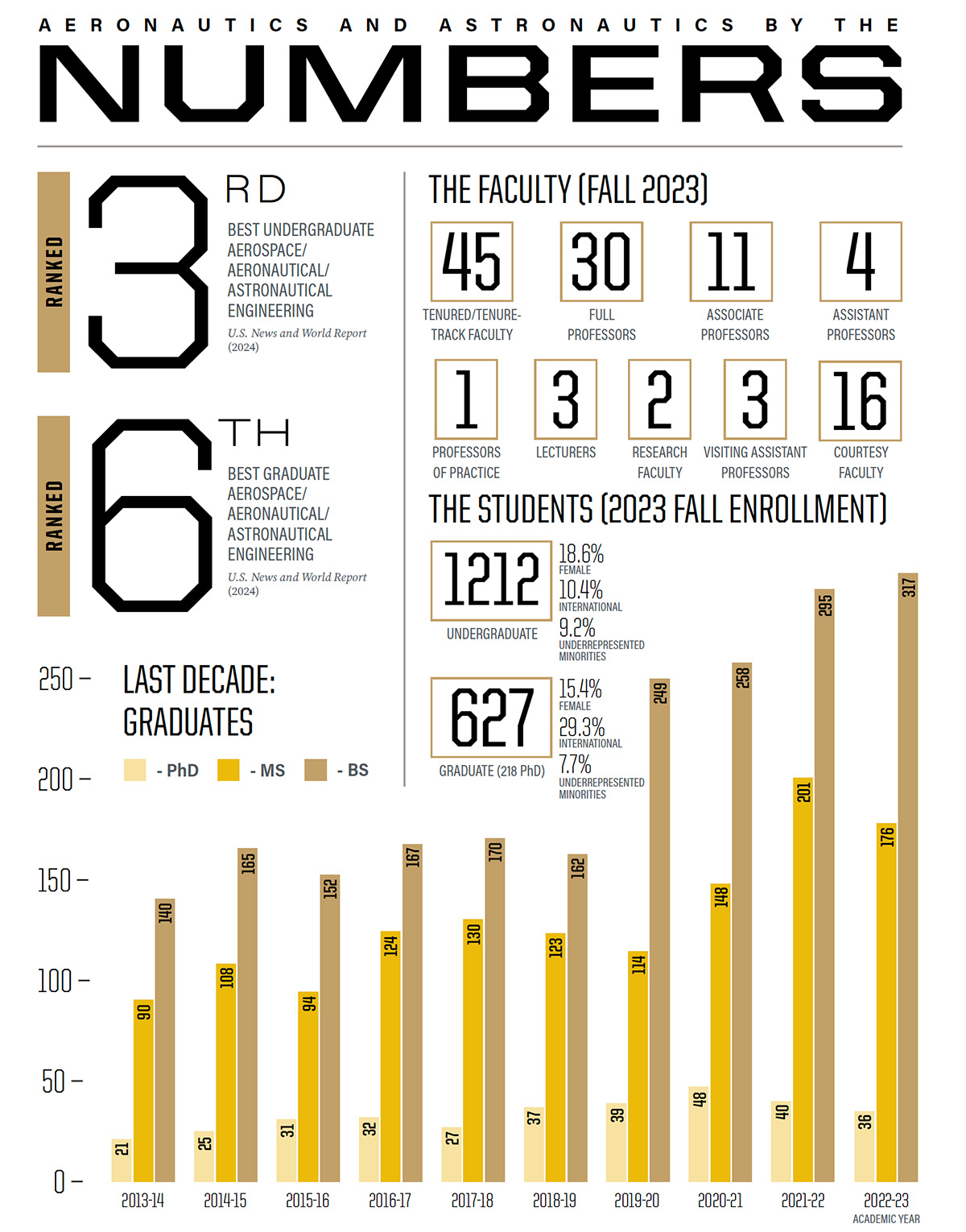
Dear alumni, friends, students, staff and faculty,
It is no secret that enrollment at the Purdue School of Aeronautics and Astronautics has been growing at a very strong pace. In 2023, data from the Integrated Postsecondary Education Data System showed that we now grant more degrees in aerospace engineering than anyone else in the U.S. Our graduates represented 5.3% of all degrees in our field for the most recent recorded year.
We reached this landmark while pursuing the high quality of our education. U.S. News and World Report announced that Purdue’s AAE undergraduate program had moved up by two spots: We are now No. 3 in the country for 2024. This is the highest spot AAE has held in the publication’s 23-year history tracking aerospace engineering.
In addition, the ShanghaiRanking Global Ranking of Academic Subjects places our program tenth in the world for aerospace engineering.
This work is not easy. Our dedicated faculty and staff, plus our recent investments in additional instructors, are responsible for these remarkable parallel recognitions.
As our graduate count doubled over the last decade, to 317 bachelor’s and 213 graduate degrees in the 2022-2023 academic year, our faculty have worked hard to maintain our world-class educational rank while pursuing cutting-edge research. We also hired 14 professors, professors of engineering practice and lecturers since 2020, 10 of those in the last 18 months.
We are continuing to improve our teaching and learning spaces, too. We expanded instructional labs this year, giving students more hands-on time with equipment that physically demonstrates the phenomenon covered in lecture courses. At the time of this letter, we have leased additional space that clubs can use to build aircraft, rockets and satellites, many in preparation for national engineering competitions. This “AAE Maker Space” is necessary to support these co-curricular activities.
All of this is crucial to what we do. Our graduates are in high demand due to the unparalleled, hands-on experiences they get here, and the instruction they get from world-renowned faculty. They engage in a huge range of activities, like going on Mars simulations, flying a 14-foot-wingspan aircraft of their design with computer vision and autonomous navigation, showing their grit with liquid-fueled rockets and conducting important research on space domain awareness. Our alumni design spacecraft and become astronauts themselves.
To take full advantage of our growth, we are also developing a strategic plan, with support from our Industrial Advisory Council and input from all AAE faculty and staff. To me, that is what being an engineer is all about. We love what we do, and we are always looking for ways to do it better.
I believe, as we continue investing in our faculty, students and staff, we can be the biggest as well as the best. I am certain that we will have more to celebrate in the coming year.
Boiler up!

William A. Crossley
Uhrig & Vournas Head of Aeronautics and Astronautics
